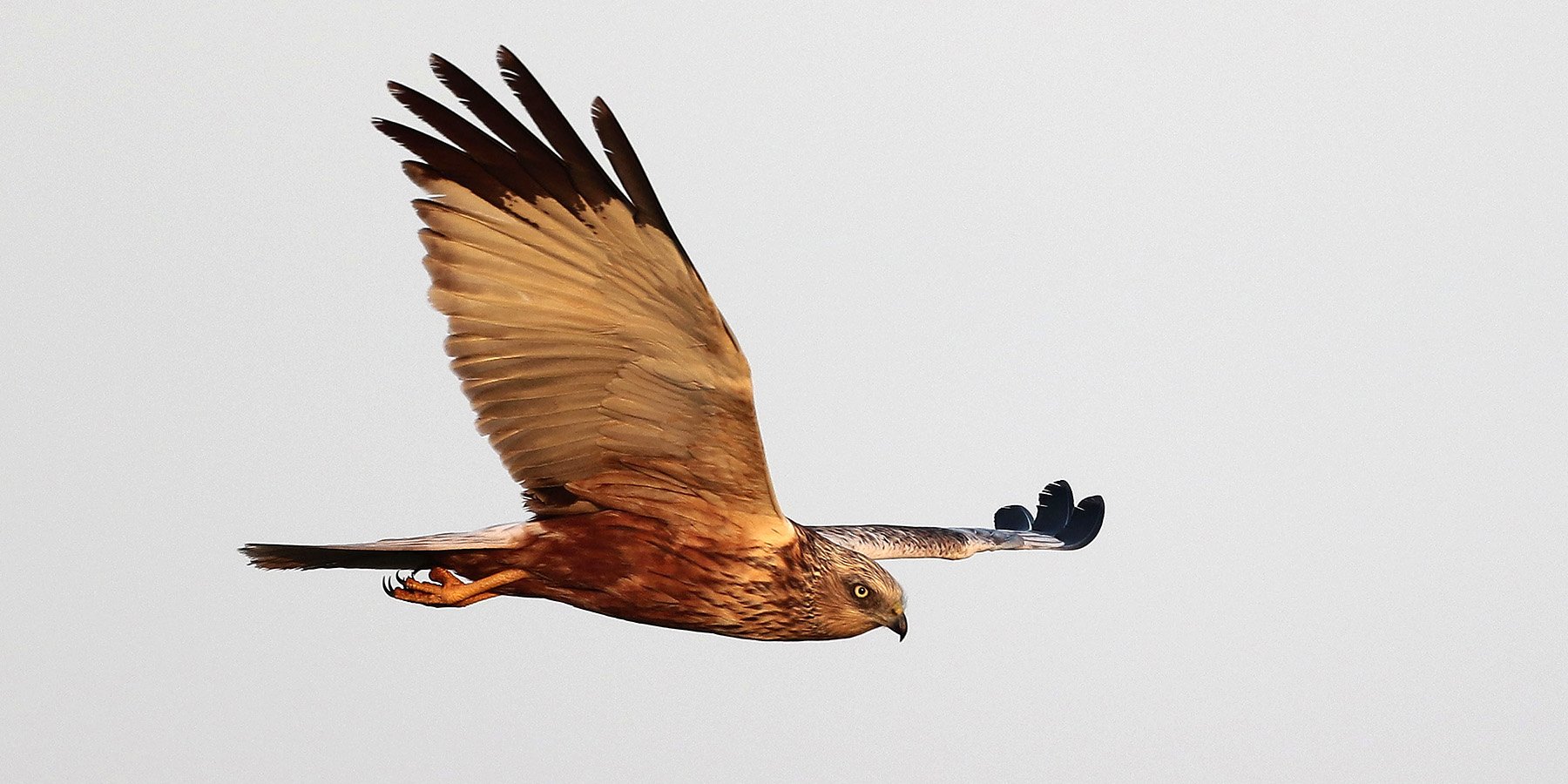After a long absence, Marsh Harriers are once again resident (and breeding) on the Gwent Levels.
After disappearing completely from British skies in the 20th century, marsh harriers have made a remarkable comeback and are one of the conservation success stories of the last few decades.
Adult male marsh harrier (Les Bunyan, RSPB-images.com)
Once common in the fenlands of eastern Britain, these magnificent raptors were driven to extinction in the late 19th century through a combination of habitat loss and persecution.
Throughout the early part of the 20th century, occasional birds from continental Europe bred in Suffolk and Norfolk and numbers gradually began to increase. However, during the 1950s the population again crashed, probably as a result of the widespread use of organochlorine pesticides (DDT). By 1961, they were again extinct in the UK.
Following a ban on the use of organochlorine pesticides, stronger legal protection, and the extensive restoration of wetland habitats, numbers once again began to increase. By 2016, there were around 600 breeding pairs and their range had extended from their East Anglian stronghold along the south coast and into Wales, the northwest, Scotland, and Ireland.
In 2016, the first pair arrived at Newport Wetlands. Although breeding attempts were not successful in the first year, over the next seven years 12 chicks were fledged. A second pair began breeding at the reserve in 2022 and in 2023 successfully fledged 3 chicks.
Marsh harriers nest on the ground, deep within reed beds. While she incubates the eggs, which can take up to 38 days, and for a few weeks after hatching, the female relies on a regular delivery of food from the male.
Juvenile marsh harrier (Les Bunyan, RSPB-images.com)
Marsh harriers hunt by flying low and slow, quartering the ground like a barn owl. When they detect their quarry, they can turn quickly and drop with outstretched talons. They take a wide variety of prey including insects, small mammals, reptiles, birds, frogs and sometimes fish. The breeding success of the harriers at Newport Wetlands shows that there is a thriving population of prey.
The largest of the harriers, the marsh harrier creates a distinctive V-shape in the air by holding its wings up. Females are chocolate-brown with a golden-yellow crown and throat. Males have a brown back, gingery belly, pale head and neck, and long, grey wings with black tips. Females are generally larger than males.
Skydancers
Marsh harriers are rightly celebrated for their impressive aerial courtship displays, called ‘skydancing’. Male Harriers climb high into the sky before tumbling earth-wards. The climax of the display is when the male makes a mid-air food pass to the female. He hovers in the air holding a prey item on outstretched legs. The female approaches from beneath him before flipping over at the last moment to catch the food dropped by the male.
Marsh harriers exchanging food - Ben Hall (RSPB-images.com)
Record your sightings
Think you’ve seen a marsh harrier? It’s important to record wildlife sightings with South East Wales Biological Recording Centre, which stores, manages and shares wildlife records from across the region. Follow the link below to find out how to record sightings.
Where to see…
What to look for…
The largest of the harriers, the marsh harrier creates a distinctive V-shape in the air by holding its wings up.
Females are chocolate-brown with a golden-yellow crown and throat.
Males have a brown back, gingery belly, pale head and neck, and long, grey wings with black tips.







